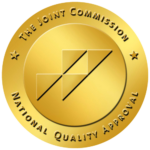Detox refers to the process of removing toxins (drugs or alcohol) from the body. Typically, when someone talks about detoxification, they’re referring to the process in a medically supervised environment, usually as preparation for a long-term substance abuse treatment program.
Call us today at 602-466-9880 to get started or click here to use your insurance benefits to pay for treatment.
In a medically supervised alcohol and drug detox in Phoenix, AZ, patients are given medications to help them through uncomfortable and potentially dangerous withdrawal symptoms. Our center offers personalized treatment plans tailored to each patient’s individual needs.
Every addiction is unique, so the path to recovery will vary for each individual. As for when to consider medical detox in Phoenix, it’s generally necessary after you become dependent on a substance. Once your body gets used to a regular dose of a particular drug, it begins to rely on that drug to function normally. This is part of a condition known as substance use disorder. According to the Substance Abuse and Mental Health Services Administration (SAMHSA), increasing rates of substance use disorder have appeared among those aged 26 and over since 2020. When substance abuse is stopped, especially abruptly, it’s possible to experience withdrawal symptoms and medical complications.

Withdrawal Symptoms
Depending on the substance in your system and how long you’ve been dependent on it, drug and alcohol addiction withdrawal symptoms may set in within hours or days and can last from several days to a week. Drugs that may require a drug detoxification program include opioids (Heroin, Fentanyl, Vicodin, Codeine, Oxycontin, and similar other drugs), heroin, alcohol, and benzodiazepines such as Xanax or Valium. Withdrawal symptoms are often compared to the flu, with headaches, chills, nausea, and vomiting being among the top effects people experience during this period. Other symptoms of withdrawal may include:
- Agitation
- Restlessness
- Paranoia
- Extreme cravings
- Cold sweats
- Seizures
- Muscle aches
The harsh reality is that the drug detox process can be physically difficult and painful, but the good news is that symptoms typically begin to improve after 3-4 days with medical intervention. Symptoms will differ depending on the drug you’re detoxing and how long it’s been in your system. Essentially, detoxification is a medically supervised withdrawal. Though it may be unpleasant, it’s the first step to a brighter future.
Going Cold Turkey
The idea of going to treatment can be intimidating at first, so you might consider trying to stop using drugs and going through detox on your own at home. However, discontinuing use on your own is risky and can lead to relapse. Stopping drugs at once is called going “cold turkey,” which tends to be uncomfortable at best and dangerous at worst. You’ll still go through withdrawal, which may be so painful that you turn back to the drug.
Going through withdrawal outside of a detox under a medical supervision setting may also carry the risk of death from choking on vomit or having a severe seizure. In addition to the difficulty of dealing with physical withdrawal symptoms, it can be hard to heal if your environment triggers you. For example, if someone isn’t treated well at home and turns to substance abuse to cope with the pain they’re feeling, it would likely be difficult to detoxify and stay clean in that same home. Support and safety are vital throughout the recovery process.
What Is Rapid or Ultra-Rapid Detoxification Treatment for Drug Abuse?
A person is put under anesthesia and given medication to clear the opioids from the body. The drugs in your system are essentially replaced, usually with a medication called naloxone. While it’s touted as a “quick fix” that shortens detox time, a 2013 study of 75 patients undergoing rapid detoxification revealed several adverse events. Risks include choking or aspirating on vomit, heart attacks, and severe mental health issues.
Though a traditional program takes slightly longer and is an uncomfortable process, it has a much higher rate of sustained recovery. Long-term recovery requires a lot of time, energy, and mental fortitude from an individual. If the process leads to a traumatic medical event like cardiac arrest, the person may be even more inclined to relapse afterward.
Rapid or ultra-rapid drug detox is also typically far more expensive than traditional services, as it likely will not be covered by your insurance provider. Unfortunately, when it comes to seeking treatment for drug or alcohol addiction, it will be a process. There’s no quick fix, but treatment is worth it!

The Alcohol & Drug Detoxification Process
Step One: Intake
When you arrive at our alcohol and drug detox center in Phoenix, the first step in the detox process is to go through an evaluation with the intake staff. You are protected under HIPAA laws at a treatment center, so anything you tell staff regarding your drug or alcohol abuse history is confidential. Detox intake usually includes a medical exam and a complete physical and psychological history to form a treatment plan. A search of your belongings also takes place to ensure no weapons or drugs are entering the facility.
Step Two: Stabilization
Once your intake evaluation is complete, you’ll enter the stabilization phase of your ongoing treatment. This is when you’ll experience acute to severe withdrawal symptoms. Depending on your treatment plan, staff may administer detox medications to ease your body through the uncomfortable transition. Mental health services are usually also provided during this time to address the mental strain drug withdrawal symptoms can take on an individual.
Step Three: Long-Term Treatment
Though alcohol and drug detox is an important first step in recovering from addiction, detox alone is rarely enough to prevent drug relapse, so the next step in your recovery will likely be a long-term drug treatment program. Detox takes care of your body, but longer-term addiction recovery programs teach you to care for your mind and help you address the social and psychological issues behind your addiction. In order to recover from something, you need to understand it.
After completing detox, you’ll have a few treatment options. If you’re not being committed involuntarily, you can go home and work on your recovery without professional help. This is generally not recommended, however, as going back to a potentially triggering environment without proper addiction treatment after going through the experience of withdrawal and detox may lead to a relapse.
The second option is attending intensive outpatient treatment services. With this method of treatment, you go home after detox and attend programs, classes and/or therapy to address the root of the addiction. Outpatient programs may work best for people with a safe and non-triggering place to return to and who are motivated to recover.
The third option is an inpatient treatment program. Inpatient alcohol rehab in Arizona involves staying at a residential treatment center for a period of time, which may range from a week to several months. Treatment centers offer emotional and psychological support, including family therapy, to address the effects of drug abuse on family members and relationships. Participation in 12-step or similar drug addiction programs is also often part of the process. These programs have professionals trained in addiction medicine who understand the effects of mental disorders on severe addictions.
Camelback Recovery provides detox for the following substances:
- Drugs
- Alcohol
- Fentanyl
- Opioids
- Opiates
- Heroin
Life After Drug and Alcohol Detox in Phoenix, AZ
Maintaining sobriety after a medically supervised detoxification program can be a challenge, but Camelback Recovery is here to help. Contact the best mental health and addiction treatment center today at 602-466-9880 for more information on our drug detox programs.
Sources
https://www.cdc.gov/mmwr/preview/mmwrhtml/mm6238a1.htm
https://www.samhsa.gov/data/sites/default/files/reports/rpt37924/2020NSDUHNationalSlides072522.pdf
Camelback recovery is amazing. The environment is great and welcoming. I highly recommend this place to anybody who is looking to better their life.
It was a really good experience! I made some stable friendships, had a lot of fun, and got to reside in an absolutely beautiful house.


